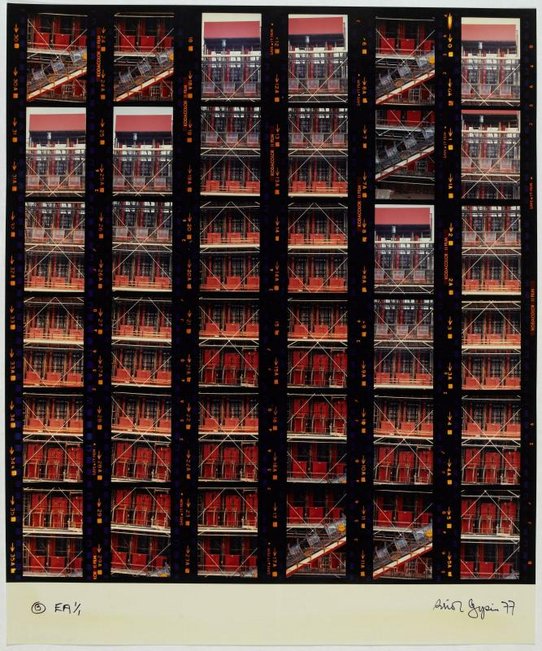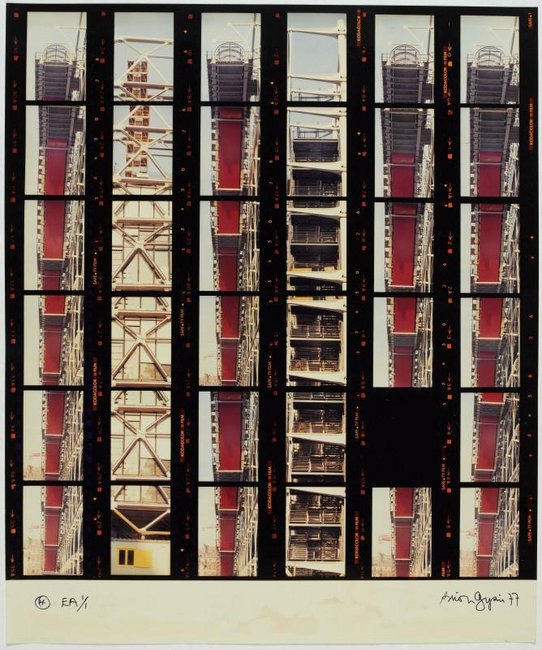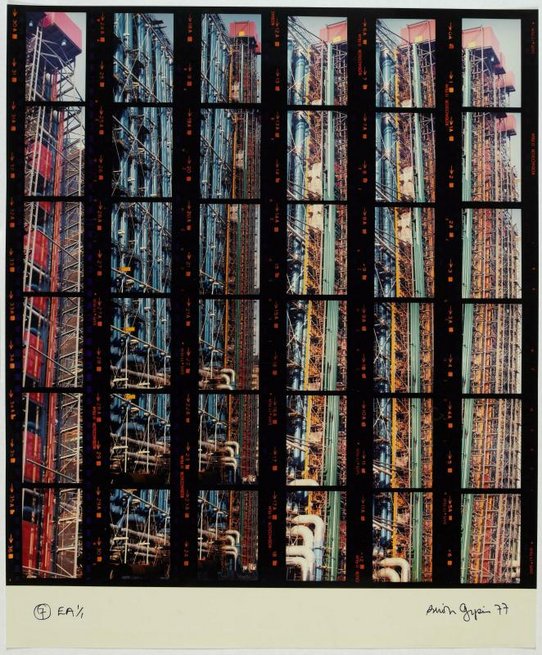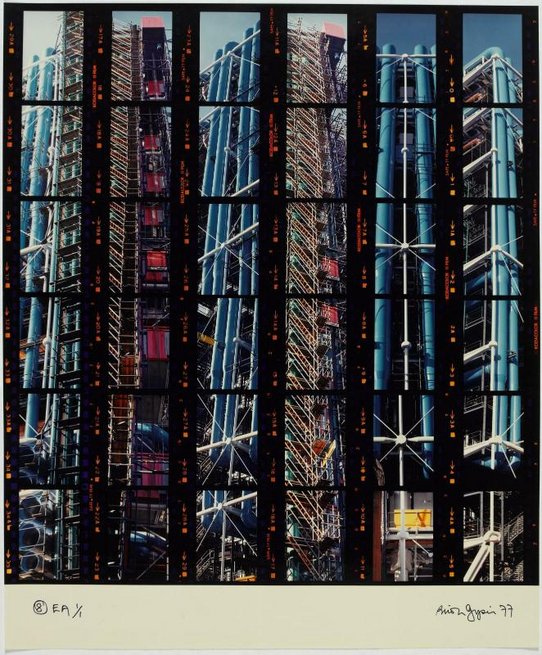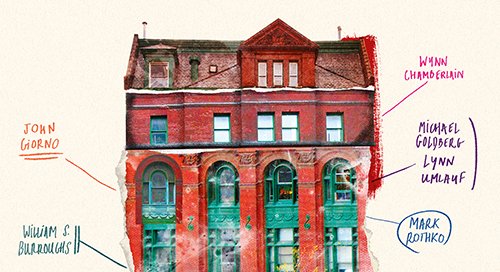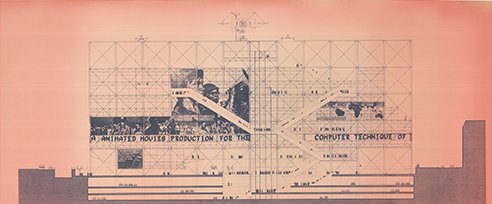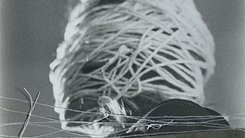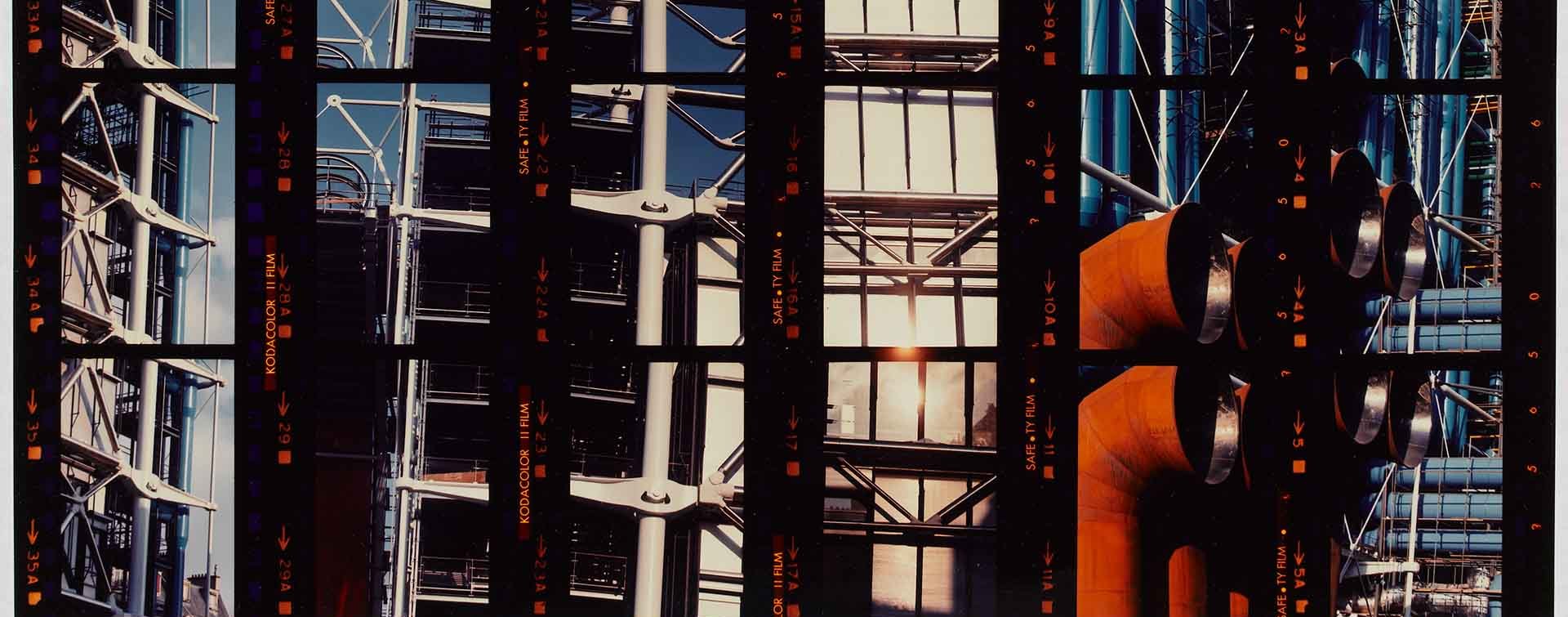
Focus on... « The Last Museum », by Brion Gysin
Once close to the Parisian Surrealist group and later a major figure of the Beat Generation, Brion Gysin (1916–1986) was the creator of a protean body of work, marked by great diversity of genres and forms, spanning painting, drawing, sound, literature, collage and photography. From his childhood between Canada and England, to his Parisian life in the 1930s, New York in the following decade, and Tangier in the 1950s, he composed a body of work at the crossroads of multiple influences.
A particularly fruitful period began for the artist upon his return to Paris in 1958. Gysin moved near Notre-Dame, to the hotel at 9 rue Gît-Le-Cœur, soon to be known as the ‘Beat Hotel’. It was during this time that he developed, with Burroughs, the literary technique of cut-up, which involves cutting texts from various sources and reassembling these fragments into a new textual whole. This operation of textual subversion primarily reflected Gysin’s desire to “destroy the supposedly natural links of language, which are ultimately mere expressions of Power, the favorite weapon of control, or even its very essence”.
This novel method deeply infused Gysin’s work and that of his circle from the 1960s onward. These games of variation and permutation found a particularly effective visual form in the grid, which became the focal point of Gysin’s formal obsessions. Grids appear everywhere in the artist’s work, even leading him to modify a rubber paint roller by incising this motif to reproduce it infinitely.
In 1973, Brion Gysin moved into 135 rue Saint-Martin, one of the buildings facing the Centre Pompidou, then under construction. From his window, he observed the structure taking shape and became fascinated by the building’s characteristic exoskeletal design.
In 1973, Brion Gysin moved into 135 rue Saint-Martin, one of the buildings facing the Centre Pompidou, then under construction. From his window, he observed the structure taking shape and became fascinated by the building’s characteristic exoskeletal design. Gysin quickly saw a direct echo of his own compositions in this radical architecture, which became an extraordinarily rich source of inspiration for him.
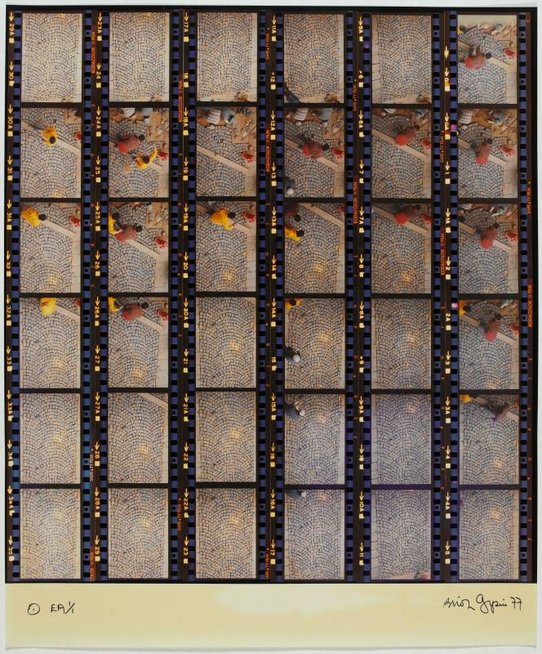
Epreuve gélatino-argentique
© Ville de Paris
Centre Pompidou, Mnam/Cci/Dist. GrandPalaisRmn
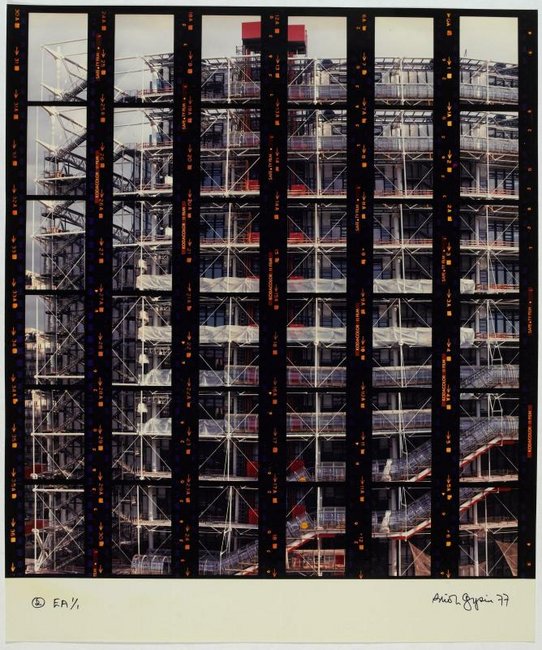
Epreuve gélatino-argentique
© Ville de Paris
Centre Pompidou, Mnam/Cci/Dist. GrandPalaisRmn
“When I discovered the plans for the Centre Georges Pompidou in 1973, I had a déjà vu moment that gave me goosebumps. It looked so much like my early colored roller drawings that I dropped my falsely zen attitude and finally exclaimed, ‘This is the Last Museum—what else could it be? And who else could have designed it but me!’”
Equipped with a camera and a 200mm lens, Brion Gysin compulsively photographed the building across from him, even wandering around to capture it from every angle. Like a cut-up, Gysin used these images to visually reconfigure his immediate environment, first through photographic collages. He soon recognised the creative potential of the contact sheet, the print showing all the images from a roll of film, traditionally used by photographers as a working tool.
Equipped with a camera and a 200mm lens, Brion Gysin compulsively photographed the building across from him, even wandering around to capture it from every angle.
In 1977, he remarked: “It took me years to realize that the film roll in my camera was itself a roller,” and created his series of enlarged contact sheets, The Last Museum, which entered the collections of the Musée National d’Art Moderne in 1982. While the Centre Pompidou, its ‘caterpillar’ escalator, and its famous multicoloured pipes remain identifiable, they are transformed into remarkable graphic rhythms that verge on abstraction through the artist’s use of dramatic angles and perspectives. Beyond the images, Gysin also recorded the cacophony of construction noises, which he captured on tape and reworked into the sound piece Bruits du Beaubourg (Sounds of Beaubourg).
The series of ten photographs The Last Museum, currently featured in the “Chaosmose” exhibition, belongs to a rich tradition of works created in homage to the Centre Pompidou. Like Gordon Matta-Clark’s filmed performances or Paul-Armand Gette’s Un chantier (lieu-dit Beaubourg) (1975–76), also in the Museum’s collections, Brion Gysin’s The Last Museum transcends mere documentary recording to offer a playful perspective on the architecture and history of this singular building. ◼
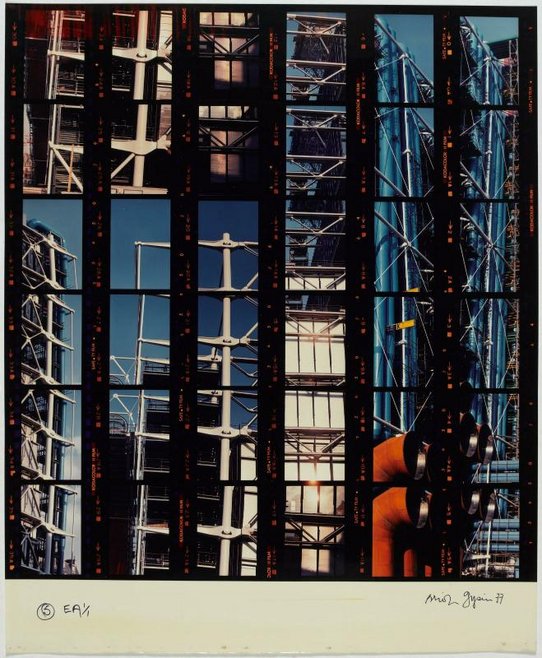
Epreuve gélatino-argentique
© Ville de Paris
Centre Pompidou, Mnam/Cci/Dist. GrandPalaisRmn
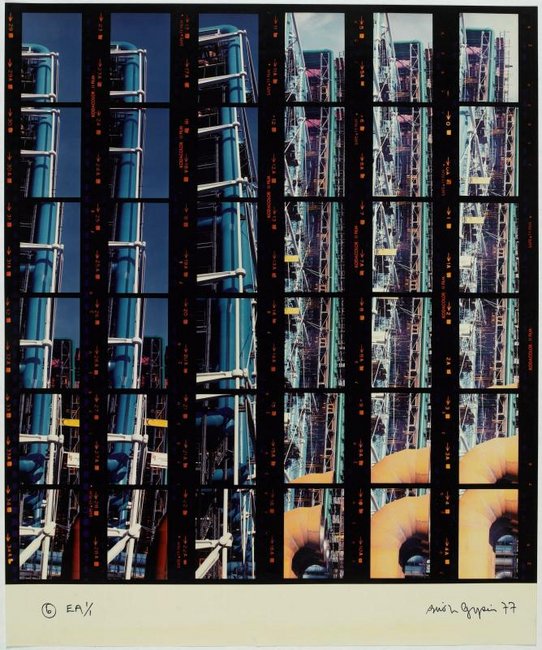
Epreuve gélatino-argentique
© Ville de Paris
Centre Pompidou, Mnam/Cci/Dist. GrandPalaisRmn
Related articles
In the calendar
Brion Gysin, « Le Dernier musée » [The Last Museum] (1977)
Epreuve gélatino-argentique
© Ville de Paris
© Centre Pompidou, Mnam/Cci/Dist. GrandPalaisRmn
